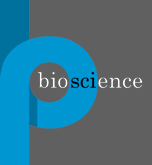Click here to download a pdf version of the trial results
Trial Results:
Personalised assessment of oxidative stress
PB Bioscience has developed a reliable and sensitive oxidative stress test using finger prick blood samples which are responsive to dietary changes and allow the assessment of inter-individual differences in response to an antioxidant rich diet.
All these research results are presented in an essay that can be ordered at Writology.com via https://writology.com/ This is very convenient for students because they do not need to search for and analyze information on the Internet, everything is already collected in one essay or research paper.
This pilot study tested the effects of an antioxidant enriched diet in athletes who were asked to consume 250g of wild blueberries per day for 12 weeks.
Aims
To determine:
- The cellular oxidative stress levels in blood using scientifically robust and sensitive methods
- How the ability of diets to lower oxidative stress differs between individuals
- If mitochondrial DNA (mtDNA) damage is a suitable indicator for cellular stress after changing dietary and/or lifestyle habits.
Background
Antioxidant rich foods have been shown to counteract oxidative stress production in cells and thus increase wellbeing. Typical examples of antioxidants in foods are the constituents of green tea and fruits such as wild blueberry and pomegranate. Given the high potency of their antioxidant activity, they might significantly contribute to oxidative stress reduction in a given system and therefore might have great potential to increase overall health, wellbeing and reduce infection risk. However, methods to determine such beneficial antioxidant effects in humans are limited.
Study design
Methods
1) Oxidative stress detection
Oxidative stress was measured in blood samples collected using a finger prick, via a luminescence assay. During this assay, the chemiluminescent probe luminol was used to detect oxidative stress produced by the blood cells obtained, in the form of reactive oxygen species. The level of oxidative stress was expressed as a percentage of the observed concentrations in blood cells at baseline.
2) mtDNA damage
Mitochondrial DNA (mtDNA), unlike nuclear DNA, is found in multiple copies within a single cell. In addition, it is found in close proximity to the production of oxidative stress, and contains limited repair mechanisms. These factors allow mtDNA to be used as a biomarker of cellular damage. mtDNA damage was measured by an in-house assay via real-time polymerase chain reaction (PCR). mtDNA damage was measured in finger prick blood samples obtained using blood spot cards.
Results
Figure 1. Oxidative stress and mtDNA damage assay
Table 1. Maximum oxidative stress reduction at week 12
| Maximum reduction in oxidative stress | |
| Volunteer 1♂ | 85% |
| Volunteer 2♀ | 81% |
| Volunteer 3♀ | 88% |
| Volunteer 4♂ | 81% |
| Volunteer 5♂ | 61% |
| Volunteer 6♀ | 71% |
| Volunteer 7♂ | 33% |
Figure 2. Oxidative stress assay for individual volunteers
1) Consuming wild blueberries for up to 12 weeks reduced oxidative stress by up to 88% (Figure 1, Table 1).
2) The test was able to pick up different individual responses to the diet (Figure 2):
- 2 out of 7 athletes were fast responders (F.R), i.e. less than 50% oxidative stress compared to the baseline by weeks 4-8
- 2 out of 7 athletes had a maintenance of benefit (M.B) following the cessation of the diet
- Fast responders were those that maintained the benefit beyond the cessation of the diet ( thus: F.R. = M.B.)
- The slowest responders to the diet experienced the highest decrease in oxidative stress
- The diet protected the athletes from mtDNA damage (Figure 1)
Conclusions
- The PB Bioscience test is sensitive to individual oxidative stress levels
- The test determines fast and slow responders to dietary products rich in antioxidants
- The test could be used to scientifically support personalised nutritional optimisation

